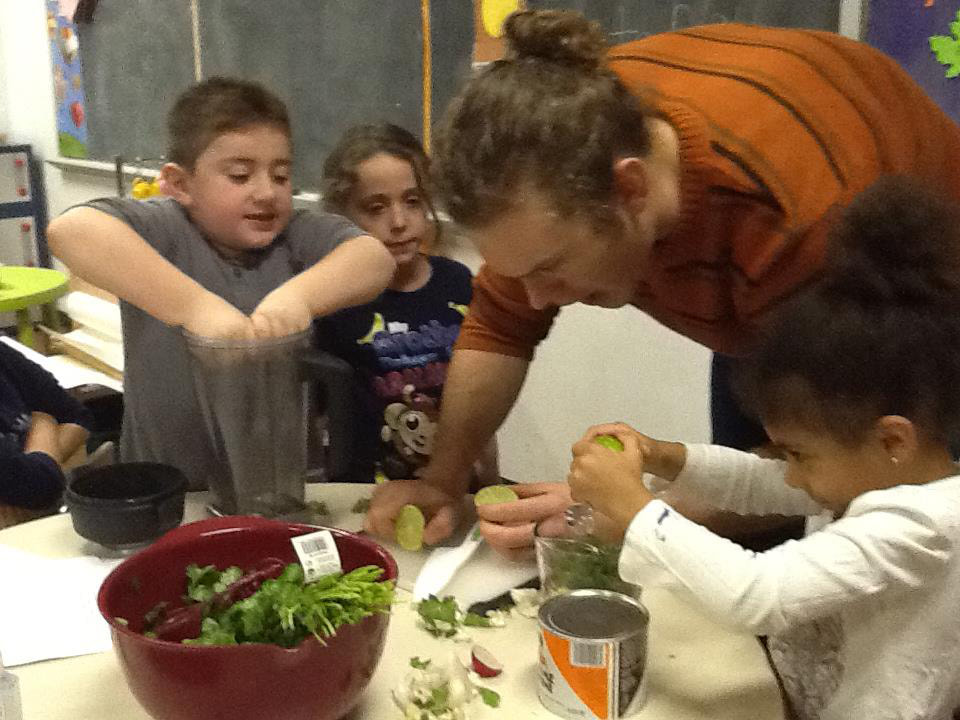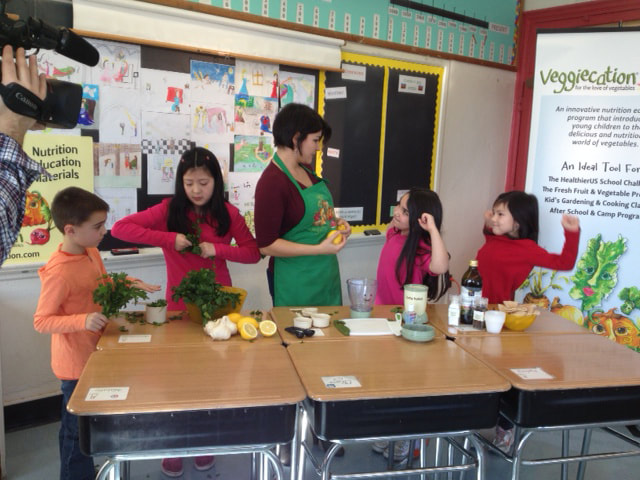|
Parents are the medium through which kids pick up on food habits and tastes. A mother is the source for a child to explore different tastes, like few, dislike many and come to a conclusion regarding foods. Kids tastes are often in sync with each other’s preferences. Most of them love to much on French fries, chocolates and dips. Infants are introduced to solids right from the 4th or 5th month (depending on the child) in the form of porridges, boiled vegetables and mashed fruits. Not many infants are happy with this transition and as parents we face a tough time habituating the kid to such routines thereon. Unending phases of spitting out, choking, not opening the mouth or indigestion are common. But physicians recommend us to try one new food every week or so before introducing another one. Even if the child’s response is not positive the food is to be reintroduced later on until the parent is sure enough that the food doesn’t go well with the child’s digestive system. So, we do take utmost care in feeding our kids with different foods, repeatedly reintroducing them despite the kid’s valiant efforts to sideline them and somewhat succeed in feeding the children with few of our own food choices. Despite such attempts and efforts our children still grow up hating vegetables, making enemies with fruits and befriending junk foods. This leads to an imbalance in nutrient intake in these little ones who are in a stage of life where the food they consume is extremely important for their growth and development.
Unbalanced Beam Balance Parents spend hours sometimes to feed their kids a small bowl of food devoid of vegetables and pulses. Every child needs to consume a well-balanced meal to support his/her cognitive, physical and emotional development and well-being. We might give heed to our kids avoidance not wanting a tantrum in the house every day, neglect their veggies and fruits intake as we cannot afford to go behind them every day right before leaving to office and satisfy our little ones with little treats to compensate for our absence at home. Whatever might be the reason, low or no consumption of fruits and vegetables can result in health problems such as constipation, obesity and chronic diseases apart from insufficient micronutrients in our body. There are aplenty nutritional interventions cropping up every now and then to help our kids increase their vegetable consumption. Ecological models suggest four broad influences including personal, social, physical and macro-level environments to affect eating behavior. Attitude, preferences and demographic factors are included in personal factors, social influences include family, friends, neighbors and others whom the child interacts with, physical environment includes availability and accessibility of vegetables in places where the child spends time-at school, home or daycare, and macro-level environment includes policy and economic price structures. While physical, social and environmental factors dominate a child’s preferences taste was the most dominant factor that determined vegetable consumption in children aged between 6 and 12 years. Veggiecation A child feels much more obligated to eat something when he/she is involved in cooking the food, preparing the ingredients or deciding upon the menu for the day. Asking for the child’s opinion in deciding upon the menu, assigning simple chores such as washing vegetables, making the table or mixing the ingredients and involving them in cooking have seemed favorable to increase their vegetable consumption. We do have results showing that cooking programs have a positive effect on the child’s vegetable choices, attitudes and behaviors. This prompted the development of a nutrition education program called veggiecation which is an evidence-based culinary nutrition education program that promotes and educates communities about health benefits of vegetables and their preparation in simple, inexpensive, nutritious and tasty ways. The main aim of the program was to establish an environment that makes kids inclined towards eating vegetables and have a positive attitude when it comes to choosing them. Already established in the United States the program also finds itself becoming popular in South Korea as a part of globalization of Veggiecation. The study was created with two main aims in mind:
The study comprised of second-grade children from two elementary classes participating. One class (35 children) was the intervention group and the other class (36 kids) was the control group. Children in the intervention group participated in a four-session cooking program and were also asked to fill a questionnaire before and after the program. They were also asked to fill a questionnaire after every session while the parents too were asked to fill a questionnaire after the intervention about their child’s behavioral changes and activities at home. Kids in the control group were also given questionnaires to complete before and after the sessions that they were not a part of. Each session was for 40 minutes, two new vegetables were introduced during each session and the kids were given a hands-on experience on cooking activities. The first 10 minutes was spent on introducing the two vegetables to kids and explaining their nutritive composition. The next 30 minutes was spent on cooking the recipes along with the teacher and finally tasting their own preparation. The 8 veggies included were zucchini, bell pepper, daikon (radish), tomato, sweet potato, spinach, cucumber and oyster mushroom. A self-report questionnaire was prepared to measure vegetable consumption behavior. Four statements were used to measure consumption and they include: I eat vegetables at breakfast, I eat vegetables at school lunch, I eat vegetables at dinner and I eat more vegetables than my friends. Every statement was measured on a four-point scale with options including often, sometimes, rarely and never. Attitude towards eating vegetables was measured using three statements on a five-point scale: eating vegetables is hard/easy, not enjoyable/enjoyable and not good/good for health. Preferences and self-efficacy were also measured likewise. Physical-environmental factors included previous exposure, availability at home and availability at school. Previous exposure was measured by scoring the experience of eating 8 vegetables that were included in the program, availability was assessed by scoring the statement ‘I always have vegetables available at home/school’ on a four-point scale. A total of 71 kids (36 boys and 35 girls) participated in the study and surprisingly showed a 100% response rate. 62% children came from homes where their moms worked and in 81.7% cases it was the mother who prepared the meal for the child. Results showed that:
Hence, veggiecation does seem to affect the child in a positive way. Providing a vegetable-friendly environment at school and home encourages children to eat more vegetables. When this concept is globalized there are chances that kids might start eating more vegetables without inhibitions. Developing simple recipes that the kids enjoy preparing and eating are the key for expansion of the program. While including school-based cooking programs does need time and efforts the benefits are worth it! We are in a competitive world but eating too requires attention as a healthy body forms the base for a healthy mind. When efforts are made to introduce culinary nutrition education in school curriculums this helps to increase food preference, attitude and eating behavior among children thereby improving their overall health and quality of life. References Impact of a school-based culinary nutrition education program on vegetable consumption behavior, intention and personal factors among Korean second-graders: https://e-nrp.org/search.php?where=aview&id=10.4162/nrp.2018.12.6.527&code=0161NRP&vmode=FULL Veggiecation Promotes Kid-friendly Vegetable Preparations: https://www.nycfoodpolicy.org/veggiecation/
0 Comments
Leave a Reply. |
AVOID FRAUD. EAT SMART.+91 7846 800 800
AuthorDietitian & Nutritionist Dr. Nafeesa Imteyaz. Archives
July 2024
Categories
All
Dr. Nafeesa's Blog @blogspot |
- Home
- Written Testimonials
- Consult
- Clinics
- Blogs
-
Diet & Nutrition
- Diabetes Reversal
- IVF IUI not needed for PCOS PCOD Infertility
-
Medical Nutrition
>
-
Disease & Conditions
>
- Infertility | PCOS
- Diabetes Mellitus
- Cholesterol
- Hypothyroid
- Kidney Problems
- Hypertension
- Cardiovascular Diseases
- Liver Diseases
- Gastro intestinal disorder
- Cancer
- Metabolic Disorders
- Orthopedic Disorders
- Eating Disorders
- Dietary Recall
- Weight Record Filled By Clients
- Online Payment Transaction Details
- Online Clients Weight Check Form
- Our Program Package Service Charges
- Weight Record 2017 Clients
- Measurements sent by Clients
- Terms & Conditions Of Payment
- Thanks. Your Form is Submitted
- Video Testimonials
- Lifestyle & Wellness
- Lifestyle & Wellness Blog
- Allergy & Intolerance
- Weight Loss / Gain
- Weight Loss / Slimming Blog
-
Disease & Conditions
>
- Life Cycle Nutrition >
- Sports Nutrition >
- Integrity in Nutrition
- Knowledge Centre
© COPYRIGHT 2022. ALL RIGHTS RESERVED. FRST HEALTHCARE PVT LTD.
Dr. Nafeesa Imteyaz of First Eat Right clinic, is the Best Dietitian Nutritionist in Bangalore. Best Dietitian Nutritionist in Pune. Best Dietitian Nutritionist in Hyderabad. Best Dietitian Nutritionist in Chennai. Best Dietitian Nutritionist in Mumbai. Best Dietitian Nutritionist in Delhi. Best Dietitian Nutritionist in Kolkata.



